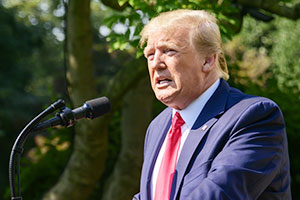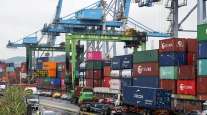Majority of Trade Aid Went to Biggest Farms, Study Finds

[Stay on top of transportation news: Get TTNews in your inbox.]
More than half of the Trump administration’s trade war aid for farmers went to just 10% of the recipients in the program, according to analysis of payments by an environmental organization.
Eighty-two farming operations received more than $500,000 in payments through April under the U.S. Agriculture Department’s Market Facilitation Program, according to the Environmental Working Group, which analyzed payment records it obtained through the Freedom of Information Act covering $8.4 billion in payments.
The Trump administration recently announced a new $16 billion round of trade aid for farmers this year as the trade dispute with China continues. The payments are tied to the acreage of the farm, meaning “the bigger the farm, the bigger the government check,” the group said.
The group regularly analyzes and publishes detailed databases on federal farm subsidy payments, often highlighting disparities in aid.

President Donald Trump (Ron Sachs/Bloomberg News)
The organization, which published a searchable database of trade aid recipients on its website July 30, said the top 1% were paid an average $188,000 while the bottom 80% averaged less than $5,000.
Trade aid payments are capped at $125,000 per person in each of three categories of commodities: one for soybeans and other row crops; one for pork and dairy; and one for cherries and almonds.
Still, farms set up as corporations or partnerships can exceed those limits. Relatives and partners who do not live or work on the farm can collect payments as long as they help make management decisions such as what to plant, said Scott Faber, senior vice president for government affairs for the environmental organization.
The organization also found thousands of farm trade aid recipients live in the nation’s largest cities.
“When Market Facilitation Program payments continue to overwhelmingly flow to an elite group of the largest farms, wealthy landowners and city residents with no real connection to the day to day operations on the land, it’s clear the program is deeply flawed and not delivering aid to those farmers in desperate need,” said Donald Carr, a senior adviser to the group.
The analysis and searchable database covers payments to more than 563,000 participants made in 2018 and in 2019 through April.




